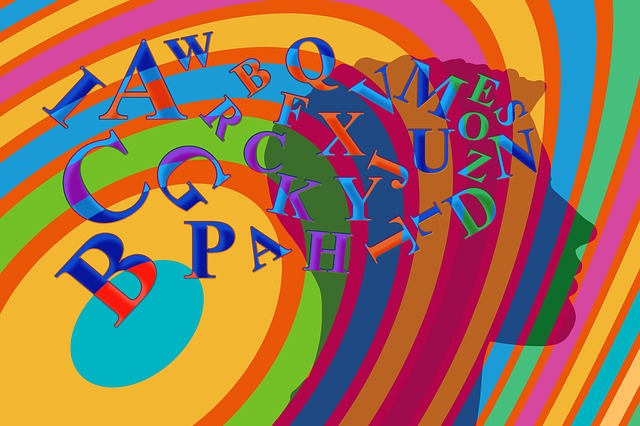Gwynn Scheltema
I call it mind mapping. You might call it clustering or brainstorming. It doesn’t matter. What does matter is that this visual technique works to generate ideas and get subconscious thoughts down on paper before you lose them.
What is mind mapping?
Mind mapping is a my non-linear way to organizing thoughts without my internal critic getting in the way. At the same time it allows me to link and organize those ideas, so that the finished exercise is something I can work with.
Sound contradictory?
Perhaps, but it is based on some interesting studies on the way we think. Ralph Haber’s study of memory, found that we have nearly 90% success rate recalling images rather than words. Tony Buzan’s research found that those who took notes using key words learned more effectively. Mind mapping combines keywords and visual representation.
Mind map mind set
 Start with an open mind and playful attitude. Mind mapping is a “brain dump.” Expect that many of the ideas you produce will not be useful. That’s not important. You can harvest the valuable nuggets later.
Start with an open mind and playful attitude. Mind mapping is a “brain dump.” Expect that many of the ideas you produce will not be useful. That’s not important. You can harvest the valuable nuggets later.
Your brain works best in short, intensive bursts (5 minutes or so), so once you begin, work fast and write down only key words, symbols, images, phrases … not sentences. Strive for an explosion of ideas.
Write with a pencil, your favourite pen, coloured markers, crayons or whatever helps to make you feel creative. Same goes for the paper you choose: with or without lines, coloured, big or small.
Where do you start?
 Begin with one central keyword or concept in the centre of the page. Starting in the middle of the page gives the creative right brain a head start, as our non-creative left brain is used to starting in the upper left-hand corner.
Begin with one central keyword or concept in the centre of the page. Starting in the middle of the page gives the creative right brain a head start, as our non-creative left brain is used to starting in the upper left-hand corner.
You can put the keyword in a circle or a cloud shape or not enclose it at all (this is a creative process, so there are no “rules.”)
You can use an idea you want to work with or a random word picked from a book or given to you by someone else.
Then what?
I started with the word GERANIUM.
Write down/draw anything that keyword suggests to you, and then a word or symbol associated with that new thought, and so on, until you have a chain of linked ideas moving out from the central theme. Do not judge your ideas at this stage; simply write them down.
Put an idea down even if it seems unrelated – your subconscious probably knows more than you do. DOCTORS OFFICE showed up on one of the branches. What does that have to do with geraniums? Seemingly nothing now, but when I organized the ideas afterwards, the link became clear. (I’ll explain later).
 Keep your hand moving. If ideas slow down, take your hand back to the central concept and begin a new branch. Draw empty lines, and your brain will move to fill them automatically; or inject more energy with a different colour pen.
Keep your hand moving. If ideas slow down, take your hand back to the central concept and begin a new branch. Draw empty lines, and your brain will move to fill them automatically; or inject more energy with a different colour pen.
Eventually you’ll have several trains of thought, all different from each other and yet linked by the central concept. You can now organize them to fit your purposes.
Organizing and using your mind map ideas
Ways to use the ideas you’ve generated can be as varied as the ideas themselves.
Say I’m looking for an idea for a non-fiction article. Perhaps my first instinct around the word GERANIUM is to do an article on container gardening, I take a highlighter and highlight all the ideas that fit in any way with that slant. In the example, I’d highlight: POTS, RED, HANGING, TRAILING, VERANDAH, PATIO, SUMMER, SCENT. Hmmm….. boring!


But in the process, the word SCENT reminded me that geranium leaves can be used to scent and colour sugar. The mind trail on HERBS, TEAS, SPA suddenly becomes more interesting. A non-fiction article on “Using Flowers for Special Teas” now has possibilities. I might do another mind map now with the word TEA in the centre.
Use a mind map over and over
But don’t stop there. The same mind map can be used several times, at different times for different styles of writing.
 The phrase DOCTORS OFFICE has me curious. I follow the branch back towards the centre, trying to work out what PINK and SUGAR have to do with it. Then it hits me… when I was a child, our doctor used to hand out tiny cylindrical candies that smelled like scented geraniums. I realize that I haven’t seen them in decades. What other sweeties from that era are no longer around? Hmmm….. Another article? A scene for my novel? A short story? Things are brewing now.
The phrase DOCTORS OFFICE has me curious. I follow the branch back towards the centre, trying to work out what PINK and SUGAR have to do with it. Then it hits me… when I was a child, our doctor used to hand out tiny cylindrical candies that smelled like scented geraniums. I realize that I haven’t seen them in decades. What other sweeties from that era are no longer around? Hmmm….. Another article? A scene for my novel? A short story? Things are brewing now.
Later, it strikes me as interesting that I have two trails that contain the word VERANDAH, and I’m drawn to the references to LATIN WORD; SECRETS; SCHOOL FRIENDS; IVY; OLD BUILDINGS; ENGLAND. I think I feel a poem emerging…..
Even the trail that started out with the boring POTS; RED, ended with SQUIRREL; CRINOLINE: HIBISCUS. Now I realize, that’s a story my subconscious has unearthed about a little critter that came to my garden last year. He loved hibiscus shoots, and …

When should I do a mind map?
Use a mind map whenever you want to generate new ideas. Use it to focus in on a particular problem area. Use it to expand something you are already working on. Use it to reveal hidden subconscious perspectives on a seemingly boring topic. Or just do it for fun and see where it takes you. Quick. Easy. Worth it!
DID YOU KNOW
 The perfect spot to be creative – and mind map to your heart’s content – is at Spring Thaw 2018 on beautiful Rice Lake in Keene, Ontario. Come for 3 or 5 days and escape to write with Writescape.Tailor your weekend to suit your needs.There is an agenda and formal programming, but you choose what sessions and activities will work for you.
The perfect spot to be creative – and mind map to your heart’s content – is at Spring Thaw 2018 on beautiful Rice Lake in Keene, Ontario. Come for 3 or 5 days and escape to write with Writescape.Tailor your weekend to suit your needs.There is an agenda and formal programming, but you choose what sessions and activities will work for you.

